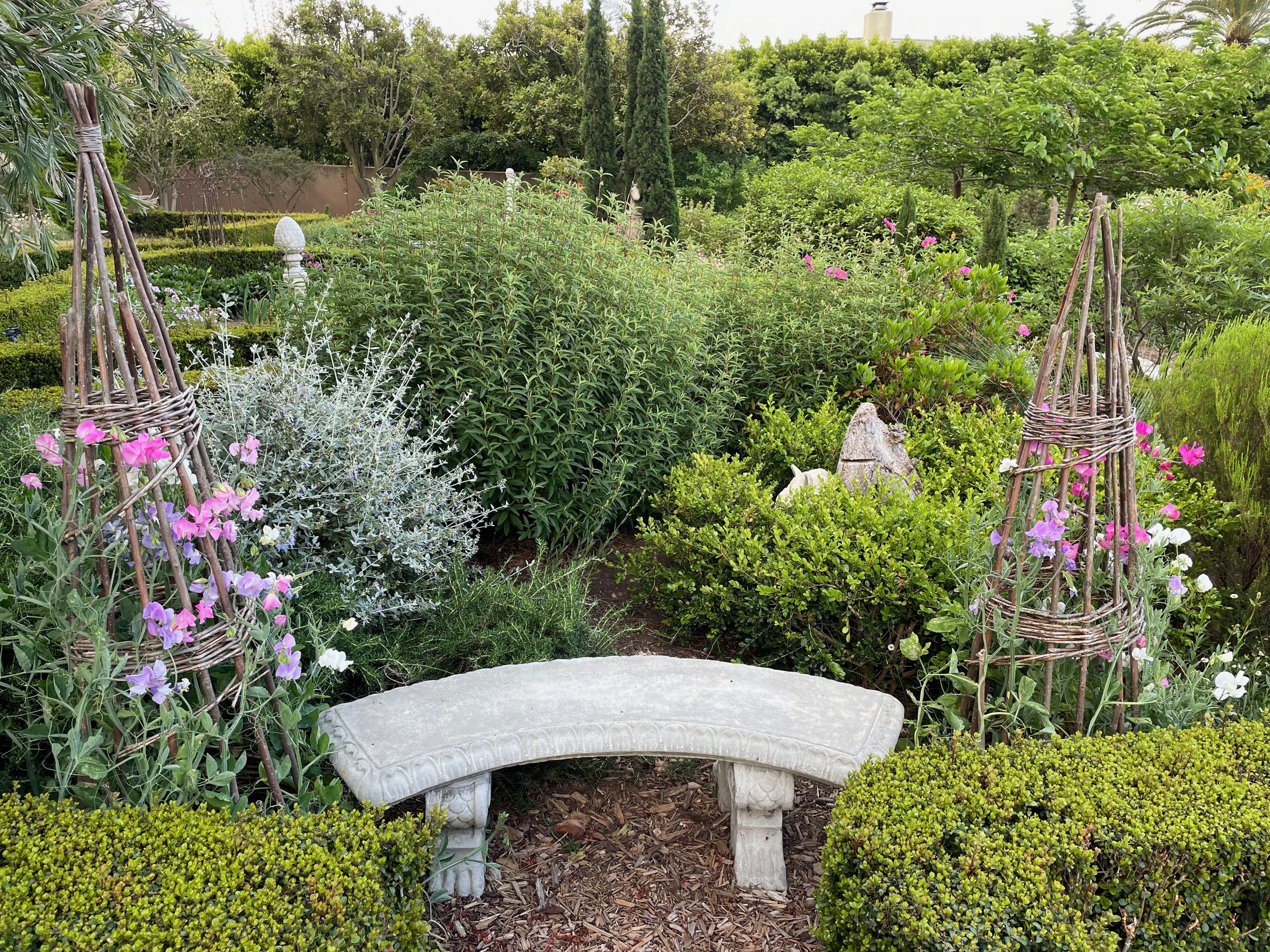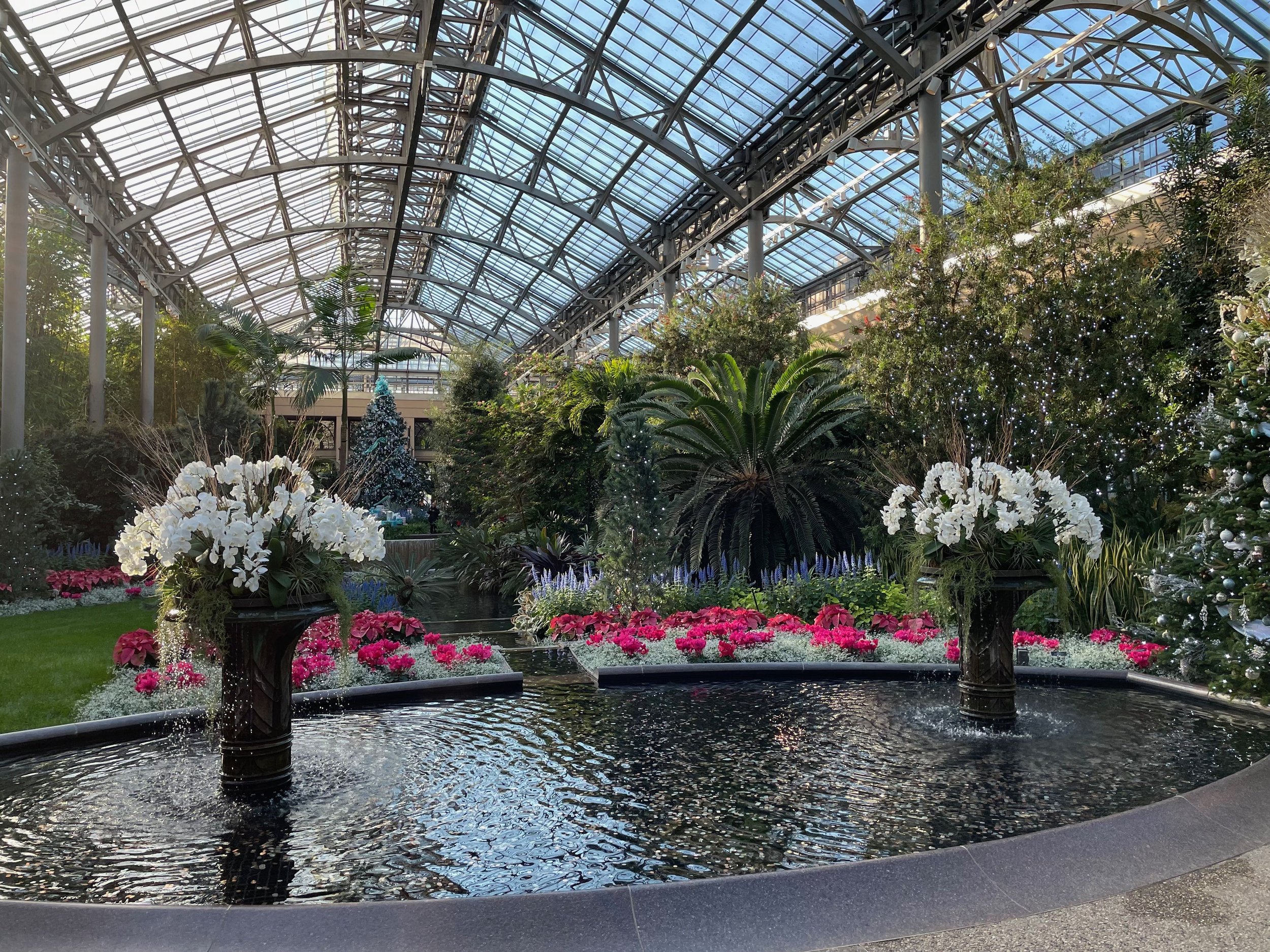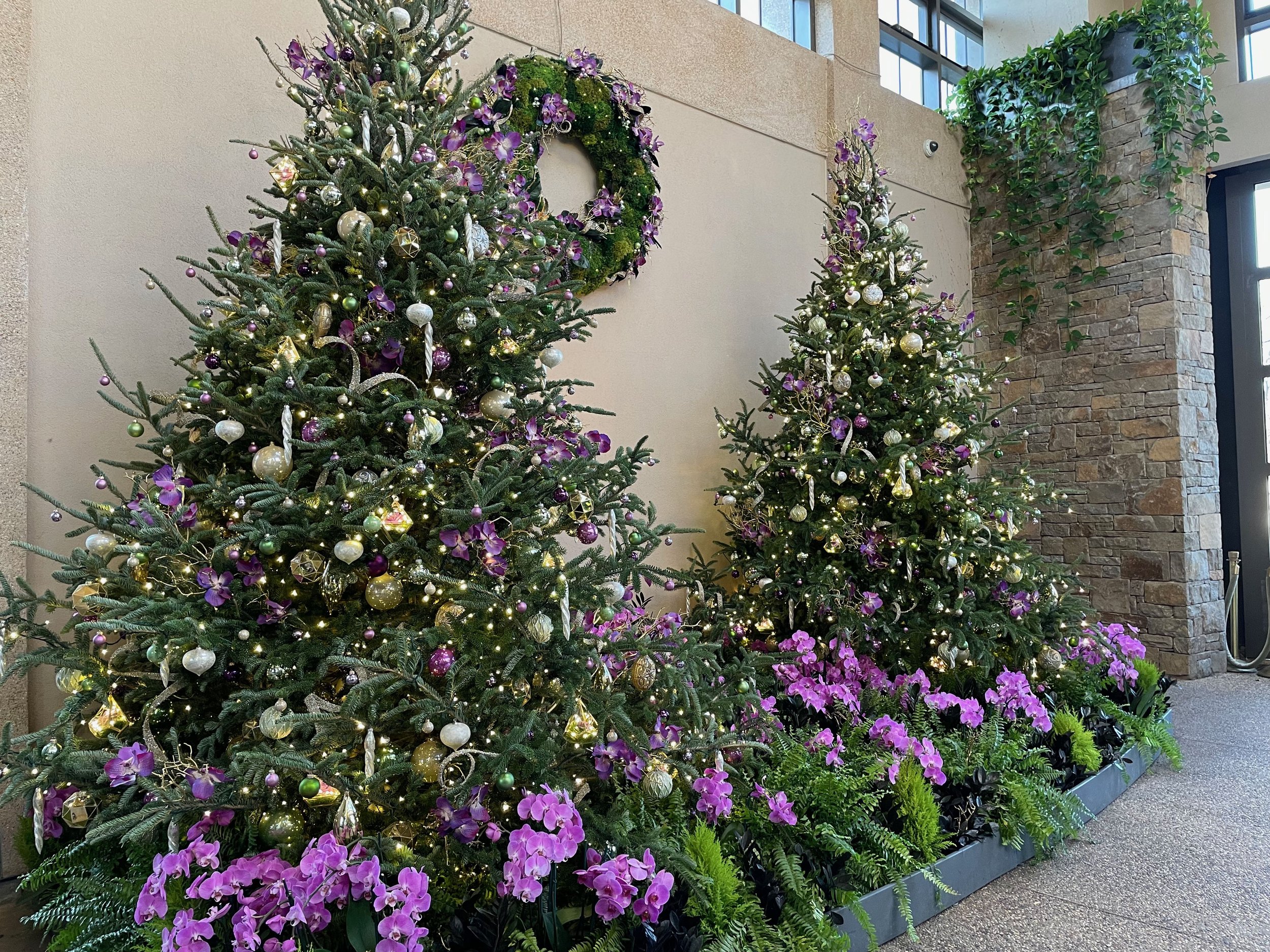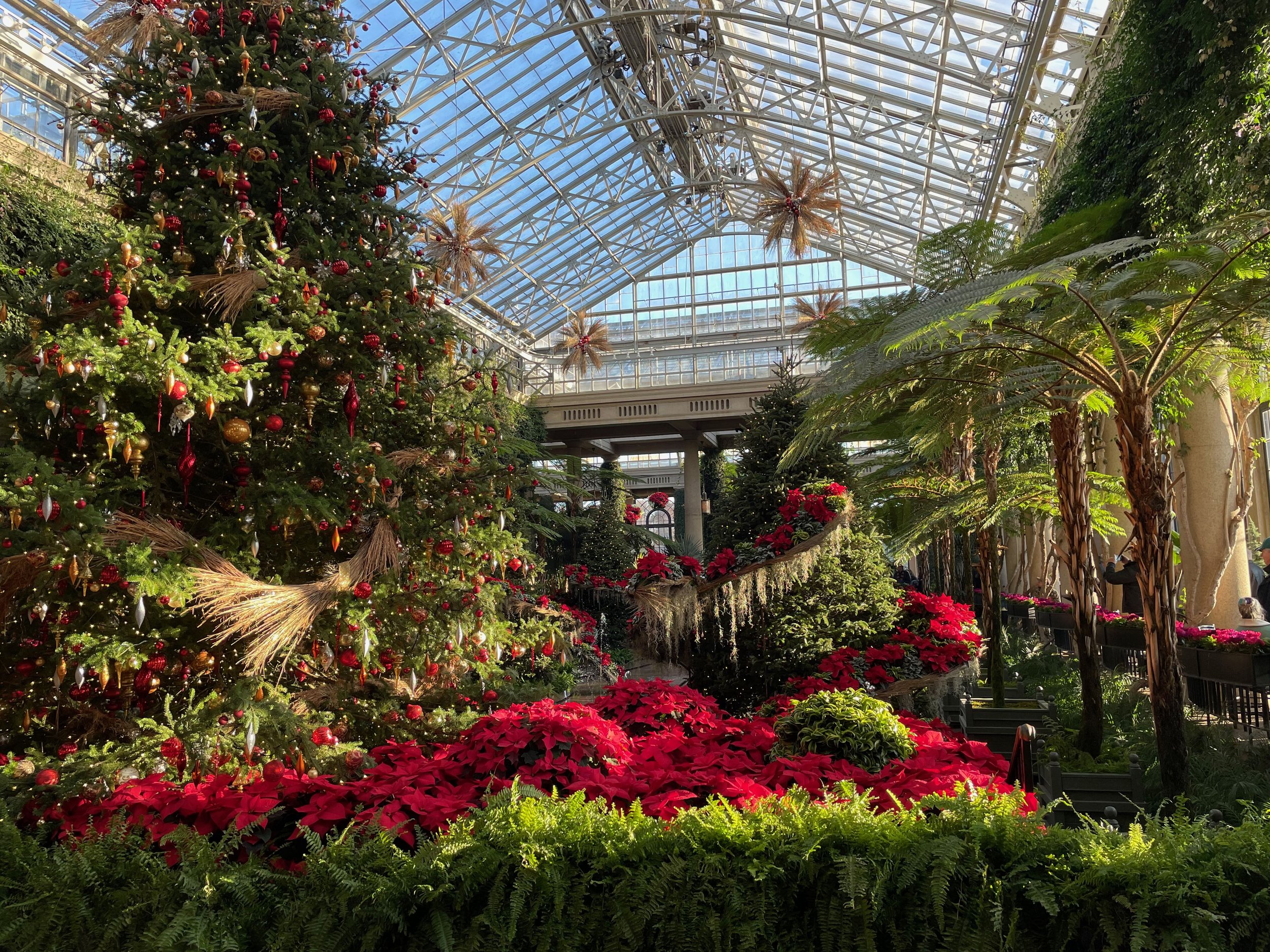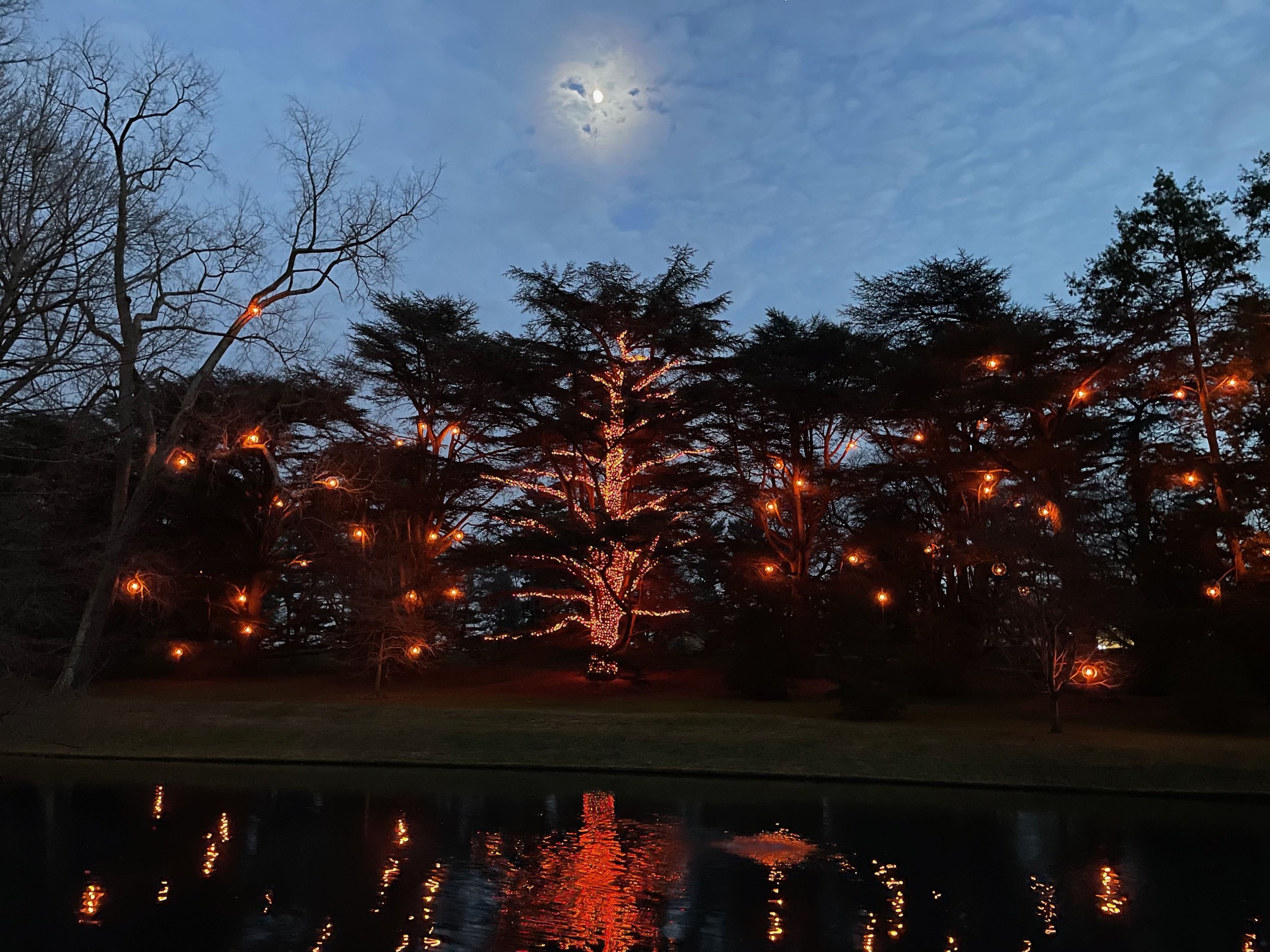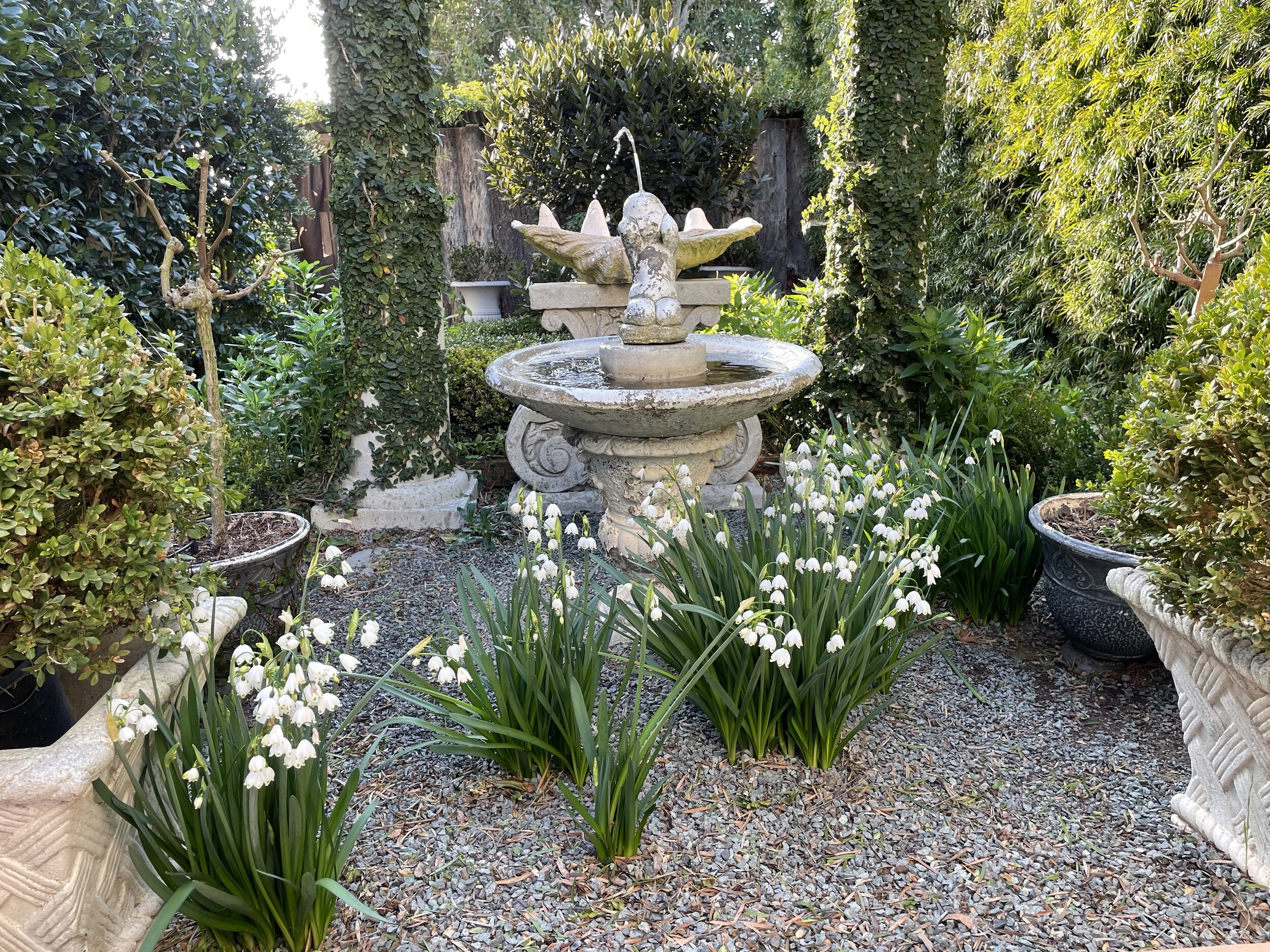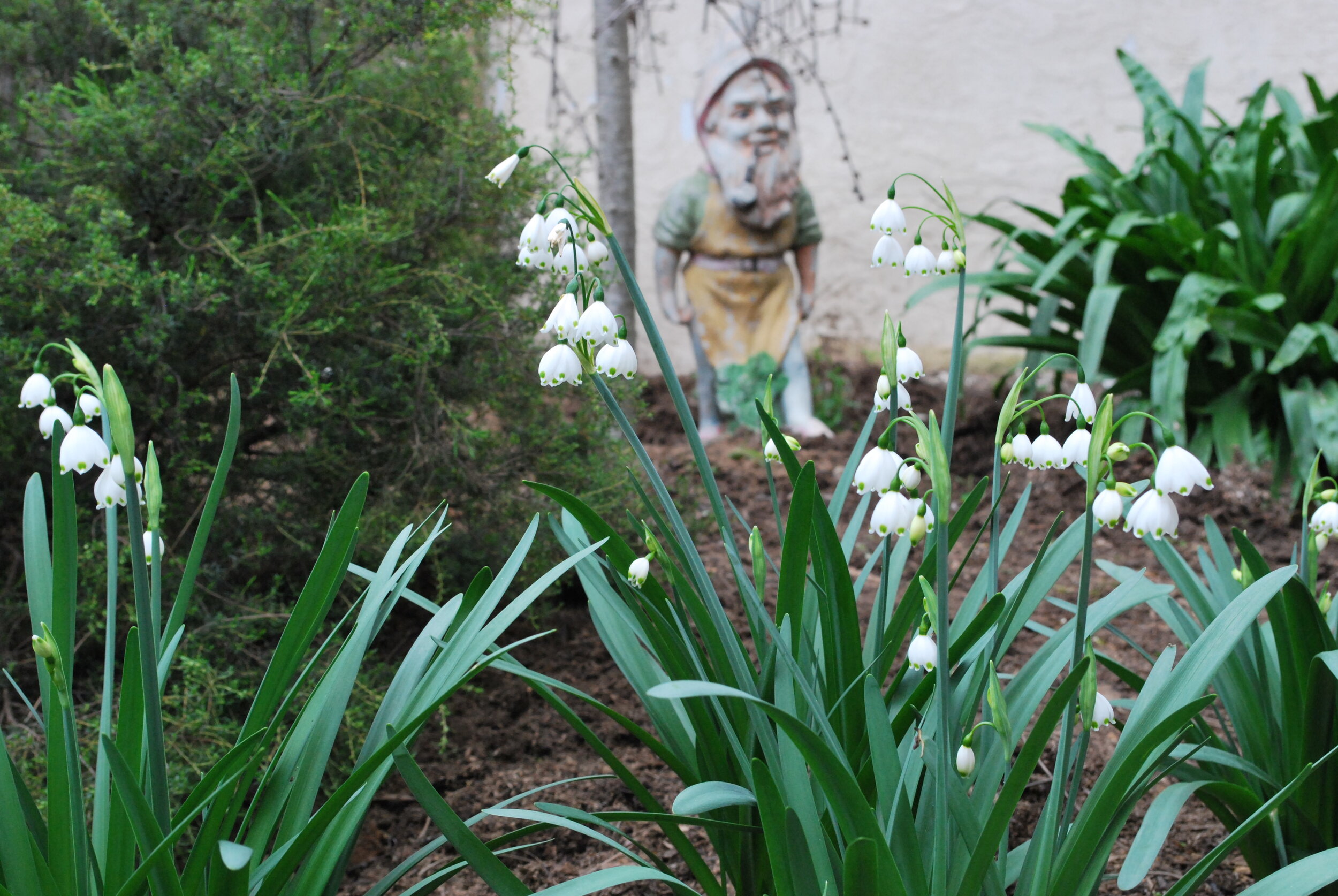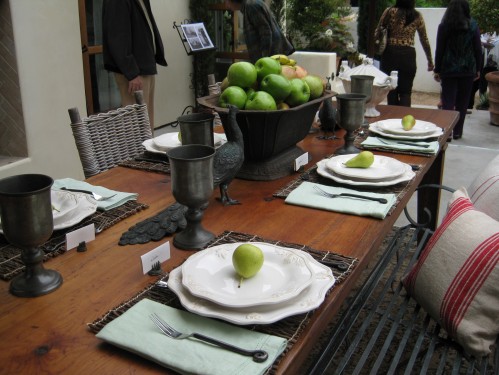In 1906, at the age of 36, Pierre S. du Pont bought the Pierce Farm and its surrounding forest outside of Kennett Square, Pennsylvania, saving it from an impending sale of trees for lumber. These were no ordinary trees, but a collection of magnificent heritage trees planted and carefully tended to for decades. He confided in a letter to a friend that he had a moment of insanity buying this property, but he couldn’t stand the thought of the trees being cut down for lumber. As with many rescue situations the rescuer is the one that is saved back. This property which eventually became Longwood Gardens and part of the du Pont family legacy, became a spot for du Pont and his family to relax, entertain, and step back from his successful business world.
Starting small, and with no initial plan, du Pont began adding and and creating areas on the property heavily influenced by his world travels, and love of beauty. Many generations have helped create Longwood Gardens, but du Pont made the most enduring contribution, and ensured its future through the Longwood Foundation created in 1946 to handle his charitable giving, operating it “for the sole use of the public for purposes of exhibition, instruction, education, and enjoyment.” It is a fascinating history story, past, present, and moving into the future.
Recently, I visited Longwood Gardens during their “Longwood Christmas” December festivities program with indoor and outdoor lights, decorations, and flowers in full swing. Here are a few photos from my visit that I thought you might enjoy. If you have the opportunity to visit Longwood Gardens, you will be astounded, and absolutely love it. Longwood Gardens is worth a visit, no matter what the season.
I enjoyed seeing the different floral designs, color combinations, and ideas used this year. A great way to gain new ideas, and stimulate your senses. Would this work in my garden? Could I make this display for my holiday home? How do the floral designers do this?
Mass plantings and repetition, one of my design mottos, create this wintry wonderland.
Rows of Christmas trees decorated with ornaments made by children groups filled the elegant ballroom in the Conservatory. I was thinking—if these walls could talk. There is a massive pipe organ in this room where a lot of concerts were held. I loved the how the original wall sconces were decorated so elegantly.
A sensational vignette of Christmas trees decorated with silver, gold, and purple orchids, softened by a base of more purple orchids, tiny lemon cypress trees, and ferns. Alice du Pont, wife of Pierre du Pont loved orchids.
I loved these living holiday orbs, made with dried grapevines, white moth orchids, textured Tillandsia, and Spanish moss. Cinnamon Wattle Trees, or Acacia leprosa, are trained to arch and drape over the walkway.
Longwood Gardens grows over 1,000 poinsettias each year for their Christmas displays. Incredible sizes, varieties, and colors—not just red.
In the end, it is all about the details. Poinsettia-decorated Christmas trees hold court with Grapefruit trees in the Orangerie.
At sunset, dusk, and into evening, Longwood Gardens becomes dressed in outdoor holiday color. You can sense how massive these trees are in relation to the people walking through them. So beautiful!
Seeing “red” was ruby beautiful with the moon joining in and all reflecting on the water.
“Longwood Gardens is the living legacy of Pierre S. du Pont bringing joy and inspiration to everyone through the beauty of nature, conservation, and learning.” —Visitor Center Lobby, Longwood Gardens
Bon Appétit et Bon Weekend…..Bonnie
February 2021, Winter White Garden, Leucojum Blooming, Looking West
I am not a Landscape Designer, but I have had success in creating garden rooms from my vision. These garden rooms take time, and thought, and hard work. Don’t forget patience. In the end, however, the garden room I create usually evolves into something much better than my original inspiration and the original vision I had in my head, and I am overjoyed. I thought you might be interested in how I do it.
This is somewhat similar to what I wrote and mused about in January 2021. Dream big. Create a vision. Make your intention, own it. Release it to the universe to manifest it. Detach yourself from the outcome. If everything is aligned, your outcome is delivered to you, incredibly better, and so much more than you could have ever imagined.
May 2019, Spring Time White Garden, Roses and Alstroemeria Blooming, Looking West
1) Have a garden location or garden room area where you want to create a special spot. It might be a blank canvas, or it might be an existing garden that needs refreshing or revising.
2) Find inspiration in garden magazines, tours, books, and even word of mouth. Save these inspirations in a file. I found the inspiration for my white garden, two photos above, in a Garden Design May/June 2010 magazine article featuring a Charleston, South Carolina garden. I have not been to Charleston yet, but hope to get there one day. This particular photo really caught the vision and idea of what I wanted to do. It was a small garden, close to the house, appeared enclosed or walled, was European influenced, used topiaries, appeared to be half garden/half patio, was elegant, and visually beautiful.
Inspiration Photo from Garden Design Magazine May/ June 2010, of Charleston, S.C. Garden
3) Be aware that your piece of inspiration will most likely not be carbon copy of what you want, but it will have the bones in it, of what drew you to it. It will be much more than you ever imagined.
4) Put in your structural boundaries, or build your perimeter. First, we built a new fence near our property line, where none had existed. I planted a podicarpus privacy hedge on the north, and a privet hedge on the south close to our home. Our existing garden shed was the south boundary, and the back of my garage, the east boundary.
5) Create more garden details. Instead of brick, I used a stone pea gravel to create a large square which would anchor half of the garden. The other half of the garden, I created a square boxwood parterre with a bay laurel topiary tree, and iceberg roses, and connected them with mulched walking paths.
6) Add your adornments. Collect these over time. I had an existing vintage “garden baby” fountain, which found a home, front and center in the pea gravel square. It is also a cooling water feature in this little garden, and a great spot to watch little birds relaxing and bathing. Later I acquired two faux pillars, light as a feather, but very real in appearance. Next came more vintage pots, in white, and so white was the theme for the garden.
7) Assemble your plant materials, plan for different plants to bloom each season. Plan your plant palette. I planted several white iceberg roses, some bush, some topiary. Alstroemeria “Casablanca’ are tall, have movement, and anchor each pillar. Leucojum, perennial bulbs planted in the old garden, return each year unscathed through the pea gravel announcing spring is around the corner.
8) Let your garden design itself. Over time, I find the garden starts to take over, and create its own design. Picture an abandoned house or church, where the landscape slowly creeps in, and starts to reclaim the structure, and design itself. My privet hedge created a natural archway with a side limb reaching out to the pillar. Creeping fig, which was so hard to start in the beginning, now has almost totally covered each pillar.
Before Photo, Looking East, Circa 2001
Immediately above is the only photo I have of the garden somewhat early on, and I think it is around 2001. It is not even what the garden looked like when we first moved in. The camelia bush was existing, but there was no lawn, only weeds. The big change came in 2010, when we completed our home remodel, and this space became a small but inviting area for an intimate garden.
After Photo, Looking East, February 2021
Immediately above, is how my white garden looks today. Happy and healthy, and looking forward to spring!
Click on Spring Blooming Gravetye Giant for my past post on the perennial bulb beauty. Please share where you get your garden inspirations and/or how you have created your favorite garden. Do tell!
Bon Weekend….Bonnie
 I am in the throes of landscaping my back garden this spring. One of my favorite new additions is the Podocarpus Icee Blue or also called Icee Blue Yellow-Wood, Podocarpus elongates "Monmal'. I love not only the striking blue-gray foliage, but the upright columnar form which is so distinct. I first saw this Podocarpus Icee Blue in a private garden in Oakland, California on a garden tour. Wow, it knocked my socks off. Notice how beautiful the blue-gray foliage looks against the brown color stucco of the house.
I am in the throes of landscaping my back garden this spring. One of my favorite new additions is the Podocarpus Icee Blue or also called Icee Blue Yellow-Wood, Podocarpus elongates "Monmal'. I love not only the striking blue-gray foliage, but the upright columnar form which is so distinct. I first saw this Podocarpus Icee Blue in a private garden in Oakland, California on a garden tour. Wow, it knocked my socks off. Notice how beautiful the blue-gray foliage looks against the brown color stucco of the house.
This is a slow growing conifer with fabulous upright structure. It thrives in USDA Zones 9-11, in partial to full sun. It likes regular watering, and more in extreme heat. The Podocarpus Icee Blue is slow growing to 15-25 feet, and 15-25 wide if you don't prune it. I find the Podocarpus Icee Blue readily available in local nurseries.
I have tall house edges I want to soften and necessary drain spouts that I want to hide. I wanted an upright tree that looked dynamite. Since it is so close to my house, I am planting these trees with root barrier material, as a precautionary measure, so I don't have to worry about the roots affecting my building foundation. I'm planting these trees against my white stucco home, which has a wine-colored trim appropriately called "Wild Raisin." I know the color combination is perfect for my home and garden setting.
The homeowner in Oakland planted her two Podocarpus Icee Blue in a container, as an option.
Please share if you have a special tree in your garden that you particularly enjoy. Please share if you have a Podocarpus Icee Blue in your garden.
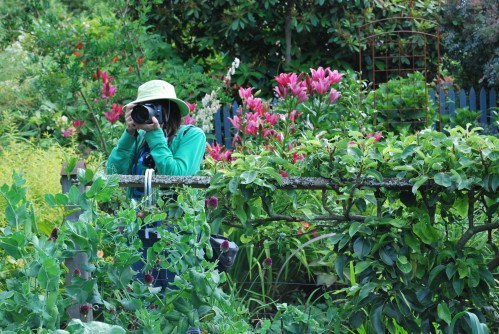 What do garden bloggers like better than writing about gardening and plants? They like gathering in verdant places like Seattle, The Emerald City, experiencing new gardens. and joining the "sisterhood of garden bloggers" across the country. Okay, there were a few fellas in the mix, too.
What do garden bloggers like better than writing about gardening and plants? They like gathering in verdant places like Seattle, The Emerald City, experiencing new gardens. and joining the "sisterhood of garden bloggers" across the country. Okay, there were a few fellas in the mix, too.
This year's garden blogging conference, dubbed Seattle Fling, was a compilation of nearly 80 gifted garden writers who pen their passions about all things gardening. A "Who's Who" of multi-talented voices naming off plant names like a foreign language.
It is a diverse group, not just for the climatic regions they represent, but how they hail their expertise. Some are Generation X, with soon-to-be-released garden books under their belts. Some are forefront blog sensations who can proudly say they have almost a decade of posts and writing in their arsenal. Some are veteran garden writers and speakers, well known in this country's garden circles.
This phenomenon of garden bloggers and writers gathering together magically happens once a year, usually in July. Last year it was in Buffalo, New York, serendiptously coinciding with Buffalo's Garden Walk. Next year's 2012 event is tentatively planned to be held in Asheville, North Carolina.
Garden bloggers attending this year's Seattle Fling 2011, experienced a well-planned and orchestrated itinerary of private and public gardens, retail garden shops and nurseries, a David Perry photography workshop, West Seattle's Sunday morning Farmers Market, and a spoiling by garden-related sponsors.
Garden bloggers were treated to this unique concrete "ruin creation" by Little and Lewis in a wooded private garden. The concrete leaf fountain now moss-aged with water and time, was originally molded from an actual Gunnera leaf.
A trip to the picturesque waterfront Olympic Sculpture Park featuring 21 works by world-renowned artists was both captivating and breathtaking, capturing the essence of Downtown Seattle on one side, and the beauty of the Olympic Mountains and Puget Sound on the other.
VintageGardenGal wishes to thank everyone involved in this year's Seattle Fling 2011, and embraces her fellow garden bloggers.
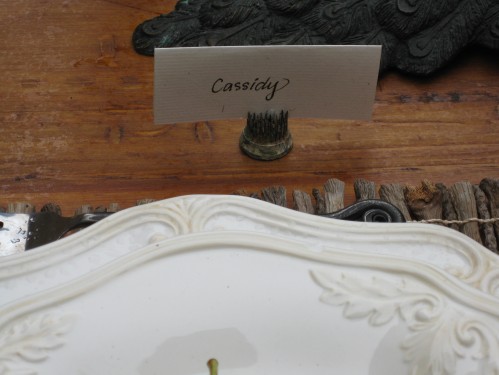 Last weekend, I experienced this year's Secret Garden Tour of La Jolla, and was thrilled at the homes and gardens showcased on the tour. Each home had an Artist in the Garden, Designer in the Garden, and Musicians in the Garden, which elevated the garden settings to poetry.
Last weekend, I experienced this year's Secret Garden Tour of La Jolla, and was thrilled at the homes and gardens showcased on the tour. Each home had an Artist in the Garden, Designer in the Garden, and Musicians in the Garden, which elevated the garden settings to poetry.
At one of my favorite homes on the tour, this historic 1925 home was decorated in tasteful architectural salvage. The table display, and Designers in the Garden, were Etceteras in La Jolla. I loved their entire table vignette, but was absolutely smitten by their vintage frog place card holders. I had never seen them so small and dainty. A perfect anchor for a name card.
The entire place setting with the pewter cups, peacocks, fruit, woven twig place mats all worked together to create a warm and inviting table.
Vintage flower frogs are fun to collect, and can re-purposed for holding table place setting, cherished photos, bills, business cards, and even their original purpose--flowers. Vintage flower frogs can be found at shops like Etceteras, fleas markets, garage sales, and online.
VintageGardenGal Tidbit Thyme...
Attention Chicken Lovers! Spruce up your chicken coop for VintageGardenGal's Annual Chicken Coop Photo Contest. Send in your photos this month to bonnie@vintagegardengal.com
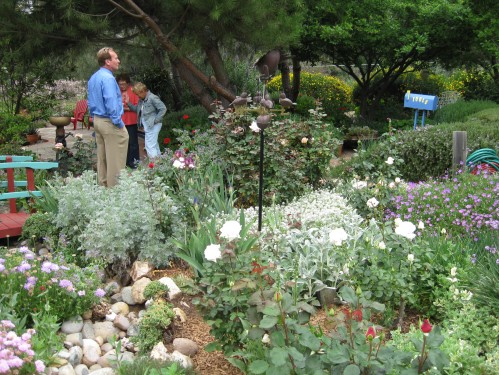 I love going on garden tours because there is always something new I learn, something new I've never seen, something clever someone has done with their garden.
I love going on garden tours because there is always something new I learn, something new I've never seen, something clever someone has done with their garden.
On a recent garden tour this spring, this was the case, with the garden owner using a mailbox to store her garden hand tools. Look closely and you can see the whimsical "bluebird blue" mailbox, which is now functioning as a safe haven for garden tools.
This garden which has been in the making for over twenty years, is simply gorgeous to mention first, with meandering paths, and filled to the brim with mass plantings of roses, native shrubs, vines, and trees. There is no place for a potting or storage shed in the middle of this garden. The garden owner blended and styled a mailbox into her garden, so as to save steps, and have her tools handy.
This is all about garden economizing. Saving your energy to reach for the mailbox to deadhead that rose, rather than running all over. Hand tools are close by, and stored together when they are needed. It is the concept that I want to point out to you. You can adapt this concept to your style and garden.
Yes, that is Larry Himmel, a local news celebrity, in the garden. His crew was filming this delightful garden the same day. Please share if you have a special container to keep your garden hand tools. Please comment on where you store your tools for your garden.
VintageGardenGal Tidbit Thyme...
Attention Chicken Lovers! Spruce up your chicken coop for VintageGardenGal's Annual Chicken Coop Photo Contest. Send in your photos this month to bonnie@vintagegardengal.com
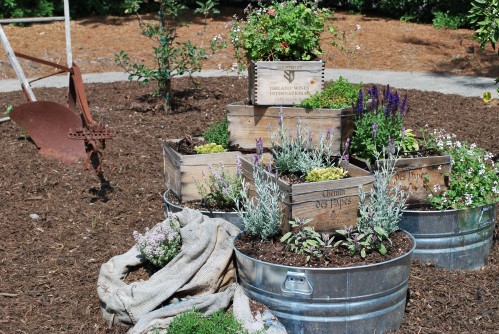 On the recent tour of this year's Encinitas Garden Festival, one of the private gardens had a beautiful white-picket fence enclosing an immaculate raised bed vegetable garden. Adjacent to the vegetable garden was an open area with a pathway and fruit trees. In addition, there was a fabulous focal point of creative staggered containers, using wine boxes, galvanized tubs, and burlap bags. Something so simple, with a "wow" factor. It is structural, functional, beautiful, clever, and unique all in one. Hats off to this homeowner, and their herb garden.
On the recent tour of this year's Encinitas Garden Festival, one of the private gardens had a beautiful white-picket fence enclosing an immaculate raised bed vegetable garden. Adjacent to the vegetable garden was an open area with a pathway and fruit trees. In addition, there was a fabulous focal point of creative staggered containers, using wine boxes, galvanized tubs, and burlap bags. Something so simple, with a "wow" factor. It is structural, functional, beautiful, clever, and unique all in one. Hats off to this homeowner, and their herb garden.
This is reminiscent of an idea in Rosalind Creasy's new book, Edible Landscaping
Most of these containers can be found in local farm and garden supply stores, such as Grangettos, Home Depot, or even flea markets for the weathered and rusty look. Look around your garage, sheds, utility areas for possible containers you might already have. Wine boxes can be found at wine shops, wineries, and friends who are in wine clubs.
It is still important to create holes for drainage in the case of the galvanzied tubs, and line the wooden wine boxes with heavy plastic, small rocks for drainage, and then your preferred soil. Eventually burlap bags will break down exposed to weather elements, but will hold up through a few seasons. Gardener's burlap is strong, yet very reasonable, coming in ready-sewn bags, or longer sheets of material.
With very little expense, and a lot of creativity, you might be able to create a unique container focal point in your garden, too.
VintageGardenGal Tidbit Thyme...
Attention Chicken Lovers! Spruce up your chicken coop for VintageGardenGal's Annual Chicken Coop Photo Contest. Send in your photos this month to bonnie@vintagegardengal.com



